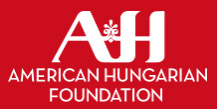William Penn Life, 2015 (50. évfolyam, 1-12. szám)
2015-09-01 / 9. szám
Tibor's Take with Tibor Check, Jr. Lizzy’s lakodalom MY HEART FEELS like a ball of Silly Putty, being stretched in a number of emotional directions. So many milestones, big events and anniversaries are taking place around the month of September 2015,1 almost feel like 1 am watching them all transpire like a reality program on the living room television. On Saturday, Sept. 5, my little sister Lizzy will marry Nick Hadzinsky on the lovely grounds of the Hungarian Cultural Center of Northeastern Ohio. Although Nick is not of Magyar lineage, he has assimilated into the American-Hungarian lifestyle of the Cseh family. In fact, Nick and my sister have served as bride and groom for the past two falusi lakodalmak (village weddings) held by the club. With that said, it is safe to say both are well versed in the traditions of an old-fashioned Magyar wedding. Nick asked Lizzy for her hand in marriage at the Memorial Day parade in Garrettsville, Ohio, in 2014. Nick was one of the parade's honorees. He was a member of the U.S. Marine Corps, 2nd Battalion, 6th Regiment—a unit known as "God's Company"--which saw action in the vicinity of Fallujah, Iraq. About halfway into the parade, Nick had his driver pull over and stop in front of my mother and sister. He then jumped out of silver Mustang convertible and formally popped the question. This surprise proposal left Lizzy speechless and my anya sobbing with tears of joy. What added to the splendor of the occasion was that Nick was dressed in his U. S. Marine Corps formal blue uniform. The proposal was a surprise only to Liz, as the rest of the town and the American-Hungarian community of Northeast Ohio knew of the impending proposal. Fox Channel 8 News in Cleveland sent reporter Jack Shea and a camera crew out to cover the surprise. In the year and several months since the proposal, much thought and planning have transpired. Fortunately, the trip my family took to visit relatives in Csőt, Hungary, yielded Lizzy a beautiful satin lakodalom ruha (wedding dress), courtesy of the cousins of the Kiss/Nagy families. My sister has always demonstrated maturity and common sense, so it was natural that she would want the wedding and reception to have special meaning with the full participation of family and friends. Liz wanted an atmosphere that was not formal, but one that centered on a family-friendly environment. Her clear choice was to have the reception at the Hungarian Cultural Center of Northeastern Ohio (HCCNEO) in Hiram. As the months progressed, several obstacles surfaced pertaining to just where the ceremony would be and who would officiate at the nuptials. At one point, Liz confided to me that she felt defeated about the wedding ceremony because of excessive bureaucratic red tape. She felt the same way when St. Margaret of Hungary was forced to close by diocesan edict in 2009. If only St. Margaret would have remained open, those barriers to a ceremony location would have been moot. The HCCNEO grounds in Hiram offer visitors a delightful sensory smorgasbord. First, you enter through the beautifully carved Székelykapu (Székely gate), near the twin flagpoles that display the American and Hungarian flags. Then you notice a table-sized, rectangular-shaped piece of pink granite. Etched into this stone is a short Hungarian verse that is also translated into English. The first line begins with the words: "This is a Holy Place. Castle of Hungarians...." That polished stone and the message it renders gave my sister the inspiration and guidance to pursue a different and more meaningful location in which to exchange wedding vows. Liz and Nick decided to have the entire wedding on the club grounds. "I grew up at the club," Lizzy said, "riding on the swings, wading in the Cuyahoga River, listening to a csárdás, being locked up in jail for stealing fruit at the szüreti mulatság (harvest celebration) and eating Point to Ponder.... Change is part of the natural progression of things. Last month, my Take was entitled, “Four Years, Part I.” It was a reflection upon the changes that have taken place in parts of the American-Hungarian community. As this country’s largest Hungarian organization, William Penn Association plays a prominent role in keeping our unique ethnic communities in place. The WPA General Convention will convene next month. The faces of WPA’s leadership may change, but the issues confronting our fraternal leaders will not. Next month, I will offer my views and possible solutions for the next four years and beyond. I ask you the following: “How can we help keep our Hungarian communities alive in 2015 and beyond?” Please send your thoughts to SilverKingl 937@ yahoo.com. - Tibor 6 ° September 2015 ° William Penn Life
